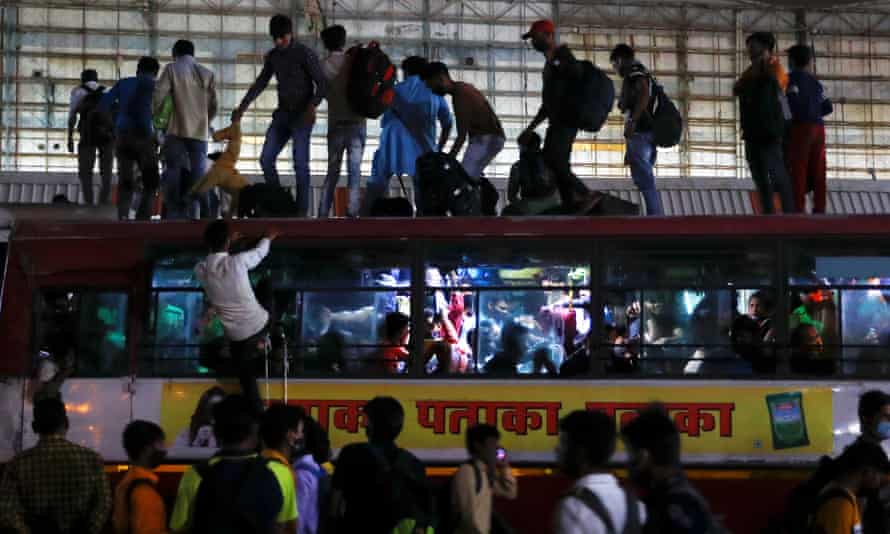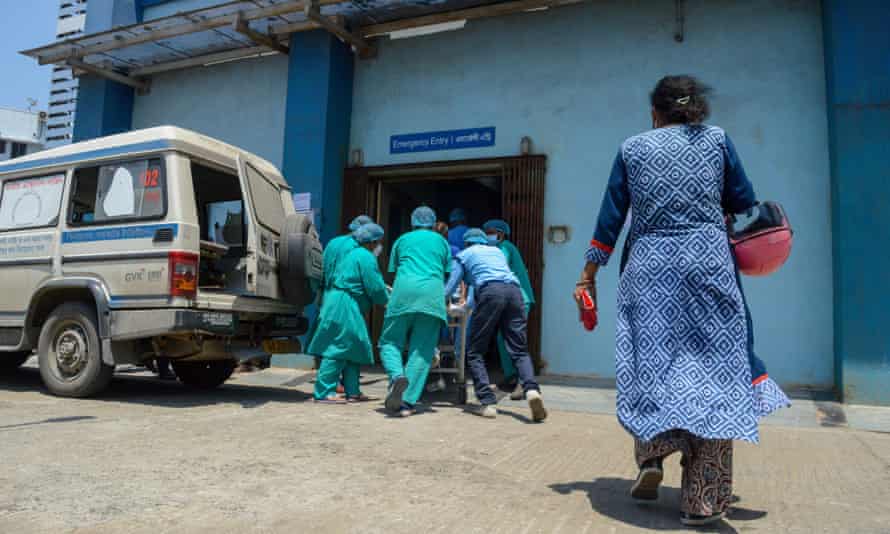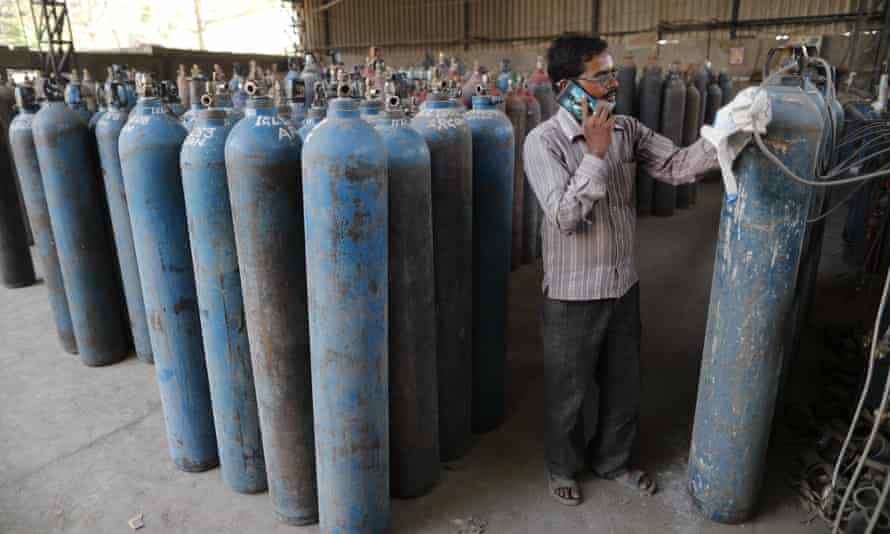Scenes of migrant workers massing at bus and train stations, fleeing lockdowns in Indian cities for their villages, are ominous to doctors in the country’s hinterlands.
They know that many of those in the crowds will be returning with Covid-19 strains that are ravaging urban India, leading to record numbers of daily infections this week and the country’s highest daily death tolls since the virus emerged. In parts of rural West Bengal state, where politicians were holding mass election rallies until late this week, the surge has already started.
“Few hospitals in this region have vacant beds for patients right now, and some are refusing to admit patients, no matter how sick they are,” a physician at a government hospital in Birbhum, a district of 3.5 million people north of Kolkata, told the Guardian on Friday. He asked not to be named, fearing reprisals from authorities.
“Where I am working, I have seen a three-fold increase in the number of patients reporting breathlessness and other Covid-related symptoms in the past two or three weeks.”

Even in India’s large cities, the scale of the country’s disastrous second wave of infections is obscured by poor or deliberately misleading data. In its rural areas, home to more than 800 million Indians, the picture is murkier still.
Surveys from the first wave showed that rural citizens in parts of Karnataka state had comparable levels of antibodies to their urban counterparts. Though they lived in less dense communities, fewer in the countryside were able to stop working and the virus found no shortage of hosts.
Mortality tolls, too, are thought to capture only a fraction of Covid-19 fatalities in a country where the vast majority in rural areas die at home, unregistered by the state, or have their deaths falsely attributed to vague causes such as old age or heart failure.
Now, as during the first wave, official figures emerging from rural areas are thought to be significant underestimates. “A huge number of people with Covid-like illnesses are lying at home even without being tested for the virus,” said Samirul Islam, the president of Bangla Sanskriti Mancha, a social organisation working to raise awareness of the disease in rural parts of West Bengal including Birbhum.
“Only patients with a serious level of breathlessness are being taken to hospitals. A big population of the infected people remain undetected.”
Official statistics show monthly cases in Birbhum grew from 42 in February, to three times that many the following month, to 4,762 by 21 April. On their current trajectory, infections will surpass 13,000 by the end of the month, far beyond what the district’s 80 government hospitals and primary healthcare centres can treat.

The doctor in the government hospital said he reported every Covid-19 death in his institution to authorities, but that most of the sick in his area would never reach his facility.
“The actual number of infections in my area is five-to-10 times higher than what my hospital reports,” the doctor said.
His own hospital had only a few beds available, he added, and they were quickly being taken.
Occupied with a bitter local election campaign, neither the state government nor its challenger, prime minister Narendra Modi’s Bharatiya Janata party, had used the apparent lull in cases earlier in the year to fortify stocks of oxygen, drugs and intensive-care beds in rural India, said Manas Gumta, a physician and the general secretary of the Association of Health Service Doctors in West Bengal.

“The current infrastructure is incapable to withstand the blast of the second Covid wave,” Gumta warned. “About three months ago we all got the signals that the second wave of the pandemic was on the way and it would hit very hard.
“We should have used those months to upgrade the infrastructure. Now the [national and state] governments are trying to revamp the infrastructure, after the wave has hit the state badly. It is like running for water after fire has broken out.”
Helping the virus to spread is a widespread lack of recognition of its dangers, more than a year into the pandemic. Islam said: “Although the virus is wreaking havoc across the country, people in the rural areas are largely unaware of it. There are many villages in the district where as many as 95% people are moving around in public without safety masks.
“All medical experts around us are warning this second wave may take a devastating shape in rural Birbhum in the coming weeks.”
This content first appear on the guardian
